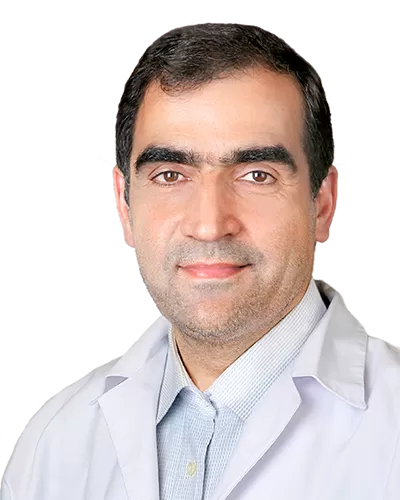Follow Us on Social media
Cornea Transplant
In an ever-evolving world of medical advancements, cornea transplant has emerged as a beacon of hope for individuals facing vision impairments. For patients seeking comprehensive healthcare solutions combined with a touch of cultural exploration, Iran has carved its niche as a premier destination for medical tourism. In this article, we delve into the intricacies of cornea transplant, its significance, and the unparalleled advantages of choosing Iranian hospitals and specialists in the field.
The Need for Cornea Transplant
The cornea, a transparent layer covering the front of the eye, plays a pivotal role in focusing light onto the retina. However, due to various factors, such as injury, infection, or degenerative diseases, the cornea's integrity can be compromised, leading to impaired vision. A cornea transplant, also known as keratoplasty, steps in as a viable solution when conventional treatments fall short. This surgical procedure involves replacing the damaged cornea with a healthy donor cornea, restoring clarity and sharpness to one's vision.
Consequences of Delay or Inexpertise
The importance of timely and expertly conducted cornea transplants cannot be overstated. Prolonging the procedure or entrusting it to inexperienced hands can exacerbate vision deterioration, potentially leading to permanent blindness. With each passing day, a compromised cornea can trigger irreversible damage to other parts of the eye. It is imperative to seek specialized care and ensure optimal outcomes.
Advantages of Iranian Hospitals and Ophthalmologists
Iran's medical landscape has undergone remarkable development, and its prowess in ophthalmology is particularly commendable. The nation boasts state-of-the-art medical facilities with cutting-edge technology, ensuring world-class treatment standards. Iranian ophthalmologists are renowned for their precision and dedication. The blend of traditional medical wisdom and modern techniques results in comprehensive care that addresses patients' needs holistically.
When is Cornea Transplant Needed?
Cornea transplants are typically recommended when vision loss becomes significant and affects daily life. Conditions such as keratoconus, corneal scarring, Fuchs' dystrophy, and corneal edema often necessitate this surgical intervention. If left untreated, these conditions can lead to worsening vision, pain, and diminished quality of life. Through timely cornea transplants, individuals can regain clear vision, reduce discomfort, and improve their overall well-being.
What are the success rates of cornea transplants?
The success rates of cornea transplants, also known as keratoplasty, vary depending on several factors, including the underlying condition, the health of the recipient's eye, the experience of the surgeon, and post-operative care. Generally, cornea transplants have a high success rate, and many patients experience significant improvements in their vision and quality of life.
It's important to note that cornea transplant success is not solely measured by visual acuity improvement. Factors like graft clarity, reduction of symptoms, and patient satisfaction also contribute to the overall success of the procedure. Some cases may require additional interventions or adjustments to achieve optimal outcomes.
Additionally, advancements in surgical techniques, medications, and post-operative care continue to enhance the success rates of cornea transplants. Regular follow-up appointments and adherence to the prescribed medications play a crucial role in preventing graft rejection and ensuring long-term success.
Remember that these success rates are approximate and can vary based on individual circumstances. Consulting with a qualified ophthalmologist who specializes in cornea transplants can provide you with more accurate information tailored to your specific situation.
Cornea Transplant Procedure: A Path to Restored Vision
A cornea transplant, also known as keratoplasty, is a surgical procedure that involves replacing a damaged or diseased cornea with a healthy donor cornea. This procedure is often recommended when vision loss occurs due to conditions that affect the clarity and integrity of the cornea, such as keratoconus, corneal scarring, Fuchs' dystrophy, and corneal edema. Here's an overview of the cornea transplant procedure:
1. Pre-operative Assessment:
Before the surgery, you'll undergo a thorough eye examination to assess the health of your eye and determine the most suitable transplantation technique. Your medical history, current eye condition, and any ongoing medications will be taken into consideration.
2. Donor Cornea Selection:
Healthy donor corneas are obtained from eye banks. These corneas are rigorously screened to ensure they are free from infections or diseases that could be transmitted to the recipient. The size of the donor cornea is matched to the recipient's cornea to promote successful graft integration.
3. Anesthesia:
The surgery is typically performed under local anesthesia, which numbs the eye and the surrounding area. You may also receive mild sedation to help you relax during the procedure.
4. Surgical Techniques:
There are several techniques for cornea transplantation, including Penetrating Keratoplasty (PK), Deep Anterior Lamellar Keratoplasty (DALK), and Endothelial Keratoplasty (EK).
Penetrating Keratoplasty (PK):
In this technique, the full thickness of the damaged cornea is removed and replaced with a full-thickness donor cornea. The surgeon uses microsurgical instruments to create precise incisions, and sutures are used to secure the new cornea.
Deep Anterior Lamellar Keratoplasty (DALK):
DALK involves removing the front layers of the damaged cornea while leaving the healthy endothelial layer intact. This technique is suitable when the innermost layer is healthy. It reduces the risk of endothelial rejection.
Endothelial Keratoplasty (EK):
EK procedures replace only the endothelial layer of the cornea. Techniques like DSAEK and DMEK involve transplanting a thin layer of donor corneal tissue containing healthy endothelial cells. These techniques offer faster visual recovery compared to traditional methods.
5. Graft Placement:
The healthy donor cornea is placed onto the recipient's eye. Sutures or other fixation methods may be used to secure the graft in place. In EK procedures, an air or gas bubble may be injected to help position the graft properly.
6. Post-operative Care:
After the surgery, you'll be given specific instructions for post-operative care, which may include using prescribed eye drops, avoiding strenuous activities, and attending follow-up appointments. These appointments are crucial to monitor the healing process and detect any signs of graft rejection or complications.
7. Recovery and Visual Rehabilitation:
The recovery period varies depending on the technique used. Initially, your vision may be blurry, and it may take several weeks or even months for your vision to stabilize and improve. Regular check-ups with your ophthalmologist will guide your visual rehabilitation journey.
Consequences of Delay: The Importance of Expert Care
Delaying or avoiding a necessary cornea transplant can have profound consequences. Vision loss can progress, impacting not only one's ability to carry out everyday tasks but also their emotional and psychological well-being.





